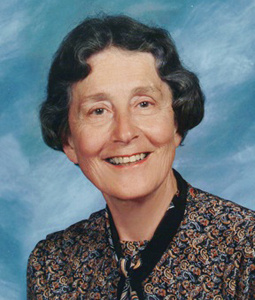Department of Biological Sciences
General Directory
Patricia DeCoursey
| Title: | Distinguished Professor Emeritus |
| Department: | Biological Sciences McCausland College of Arts and Sciences |

Bio
Dr. DeCoursey's research centered on chronobiology (biological rhythms), the study of internal timing mechanisms for organisms, related to environmental cycles such as tidal cycles, daily solar cycles, or annual cycles. Neural pacemakers or "living clocks" impart an adaptive time structure to organisms through the synchronization of the internal, neural timing component with environmental time by specific synchronizing agents, especially the solar day-night cycle. Dr. DeCoursey's research emphasizes the physiological, ecological and behavioral aspects of mammalian daily (circadian) rhythmicity. Physiological studies have included retinal function relative to animal circadian rhythms, as well as the transplantation of neural circadian pacemakers in rodents. Ecological and behavioral studies have addressed the adaptive value of circadian clocks. Can free-living, wild species of rodents such as chipmunks, antelope squirrels, or golden-mantled squirrels survive in natural habitat without their neural circadian pacemaker? What impact does the deletion of the pacemaker have on time-dependent functions such as hibernation of ground squirrels? These questions are being addressed by means of radio-telemetry and implanted data-loggers for tracking survival and behavior of ground squirrel in wilderness habitat over their lifetimes. Rodents serve as vital experimental models for circadian timing since they mirror in close detail the human circadian system. Experimental studies of rodent biological clocks hold out hope for understanding and correcting human dysfunctions such as jet lag, shift worker sleep problems, and insomnia of the elderly.
From 2006 -2019, Dr. DeCoursey served as the Director of the W. Gordon Belser Arboretum. This ten-acre woodland property, located in metropolitan Columbia, SC, serves as an outdoor teaching facility at the University of South Carolina. The Arboretum's mission is to preserve a pristine urban forest, to provide facilities for teaching environmental courses for USC students, and to serve as a neighborhood outreach station for sustainable environmental initiatives. An Open House for the General Public is held on the 3rd Sunday of each month from 1 to 4 pm. The Arboretum is topographically very diverse, with a deep central valley flanked by fossil sand dunes. Twelve biomes (native plant communities) have been shaped in a major Restoration, in order to illustrate basic ecological principals and allow "hands-on" experiences for undergraduate students of the University of South Carolina. These plant communities range from dry, fossil sand dune biomes to lush creek and forest habitats. Facilities include an outdoor classroom, a mile-long trail with self-guiding signs and many other exhibits. Classes and other visitor groups should reserve a date and specific facilities in advance with Dr. Trey Franklin.
Publications
DeCoursey, P.J.. 2014. Survival value of the Suprachiasmatic Nuclei (SCN) in four wild sciurid rodents. Behavioral Neuroscience, 128: 240-249
DeCoursey, P.J.. 2004. Diversity of function of SCN pacemakers in behavior and ecology of 3 species of sciurid rodents. Biological Rhythms Research. 35(1/2): 13-33. Andrews Experimental Forest Letter
DeCoursey, P.J.. 2004. The role of the suprachiasmatic pacemaker (SCN) in energy expenditure durning hibernation of golden-mantled ground squirrels. Life in the Cold. 371-378. Andrews Experimental Forest Letter
DeCoursey, P.J.. 2003. Chronobiology: Biological Timekeeping. Sinauer Associates Inc. Chapters 1, 2, 5, 6, 9, 10, 11.
.